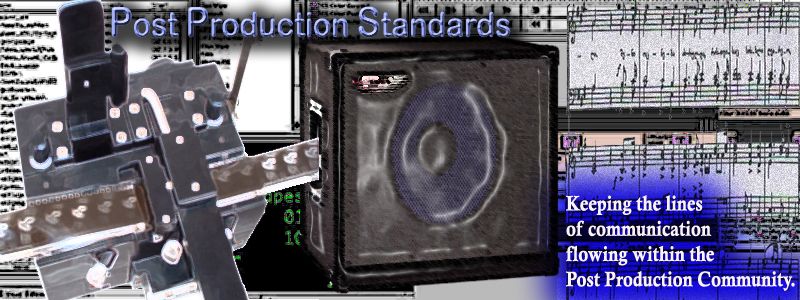Generally speaking, I fall into the "more information is better information" column.
Along those lines, I wanted to touch on naming conventions for sequence turnover.
I am a huge fan of using version numbers rather than dates for sequences.
Sure, many people will say that dates make more sense, but there are several reasons why I go with versions over dates.
Versions are absolute. You will never have 2 versions with the same number. You could have 2 or more versions of a sequence on a single date. I know, you have never had that happen.
Versions get incremented at each turnvover. Dates are a secondary check.
All information needed is included: Reel / Version / Date / LFOA / Description.
If you use leading zero's where needed, your data will always lineup nicely in spreadsheets or whatever database you might be using.
The dating convention is based on year/month/day, which lets any program sort the dates correctly.
Picture Quicktime:
1AB_v01_071130_1064+03.mov
Audio GuideTracks:
1AB_v01_071130_1064+03_DIA.aif
1AB_v01_071130_1064+03_SFX.aif
1AB_v01_071130_1064+03_MUS.aif
Audio OMF:
1AB_v01_071130_1064+03_DIA.omf
1AB_v01_071130_1064+03_SFX.omf
1AB_v01_071130_1064+03_MUS.omf
-Scott

3 comments:
I assume 1 means reel 1, what does AB refer to?
Also, who uses the GuideTracks?
AB is a holdover from the old days of film in most cases, where you would have a "A" reel and a "B" reel, each of which might be 1000'ish. When you combined them you would have an "AB" reel. You could just as easily replace that with R1 or R01.
As far as guide tracks, both music and sound would use those to listen to what editorial has done with it's tracks, without having to deal with OMF/AAF turnovers. You can just load up a single file that represents a particular element or group of elements in a turnover.
Your DI facility could also use them for playback of tracks to match picture if the client wanted that.
-Scott
Great blog you have here
Post a Comment